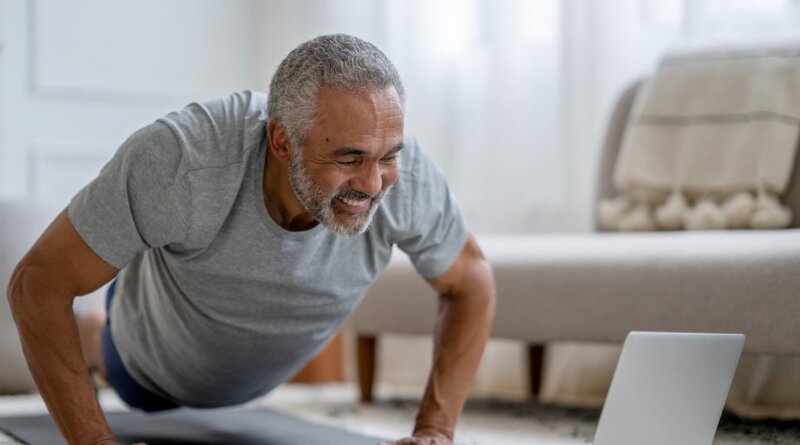Top Benefits of Exercise (and How Much to Do)
PHOTO CREDIT: FatCamera / Getty Images
SOURCES:
Mark Hutchinson, MD, FACSM, professor of orthopedics and sports medicine and head team physician, University of Illinois Chicago; president, ACSM Foundation, Chicago.
Gene Shirokobrod, DPT, co-founder, Recharge, Ellicott City, MD.
CDC: “How much physical activity do adults need?”
OrthoInfo: “Healthy Bones at Every Age.”
ChoosePT: “Physical Therapy Guide to Osteoporosis.”
Archives of Physical Medicine and Rehabilitation: “The Erlangen Fitness Osteoporosis Prevention Study: a controlled exercise trial in early postmenopausal women with low bone density-first-year results.”
Harvard Health Publishing, Harvard Medical School: “Declining muscle mass is part of aging, but that does not mean you are helpless to stop it.”
International Journal of Environmental Research and Public Health: “The Effects of High-Intensity Interval Training vs. Moderate-Intensity Continuous Training on Heart Rate Variability in Physically Inactive Adults.”
European Journal of Cardiovascular Prevention and Rehabilitation: “Association of physical activity with all-cause and cardiovascular mortality: a systematic review and meta-analysis.”
American Journal of Epidemiology: “Does Strength-Promoting Exercise Confer Unique Health Benefits? A Pooled Analysis of Data on 11 Population Cohorts With All-Cause, Cancer, and Cardiovascular Mortality Endpoints.”
British Journal of Sports Medicine: “The dose-response effect of physical activity on cancer mortality: findings from 71 prospective cohort studies.”
Physiological Reviews: “Role of Inactivity in Chronic Diseases: Evolutionary Insight and Pathophysiological Mechanisms.”
Cannabis and Cannabinoid Research: “A Systematic Review and Meta-Analysis on the Effects of Exercise on the Endocannabinoid System.”
Medicine & Science in Sport & Exercise: “Endocannabinoid and Mood Responses to Exercise in Adults with Varying Activity Levels.”
The Conversation: “The ‘runner’s high’ may result from molecules called cannabinoids—the body’s own version of THC and CBD.”
JAMA Psychiatry: “Association of Efficacy of Resistance Exercise Training With Depressive Symptoms: Meta-analysis and Meta-regression Analysis of Randomized Clinical Trials.”
Sports Medicine: “The Effects of Resistance Exercise Training on Anxiety: A Meta-Analysis and Meta-Regression Analysis of Randomized Controlled Trials.”
Scandinavian Journal of Medicine & Science in Sports: “Increased insulin-stimulated glucose uptake in both leg and arm muscles after sprint interval and moderate-intensity training in subjects with type 2 diabetes or prediabetes.”
British Journal of Sports Medicine: “Exercise interventions for cognitive function in adults older than 50: a systematic review with meta-analysis.”
Preventive Medicine Reports: “Sprint-based exercise and cognitive function in adolescents.”
Brain Plasticity: “The Effects of Acute Exercise on Mood, Cognition, Neurophysiology, and Neurochemical Pathways: A Review.”
National Library of Medicine: “Neuroanatomy, Parasympathetic Nervous System.”
The Journal of Alternative and Complementary Medicine: “Effects of Yoga on Heart Rate Variability and Depressive Symptoms in Women” A Randomized Controlled Trial.”
Evidence-Based Complementary and Alternative Medicine: “Medical Students’ Stress Levels and Sense of Well Being After Six Weeks of Yoga and Meditation.”
CDC: “Facts About Falls.”
Medicine and Science in Sports and Exercise: “Physical Activity, Injurious Falls, and Physical Function in Aging: An Umbrella Review.”




